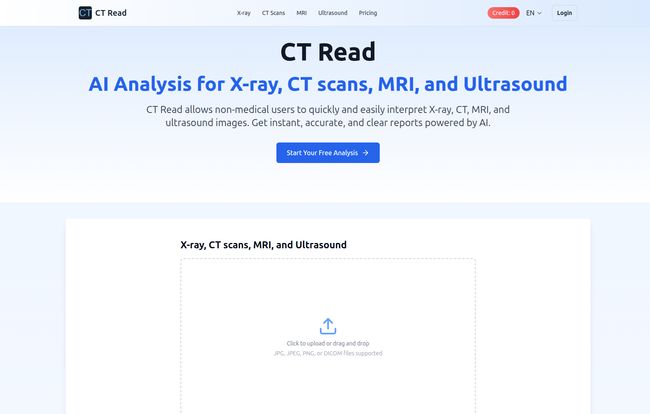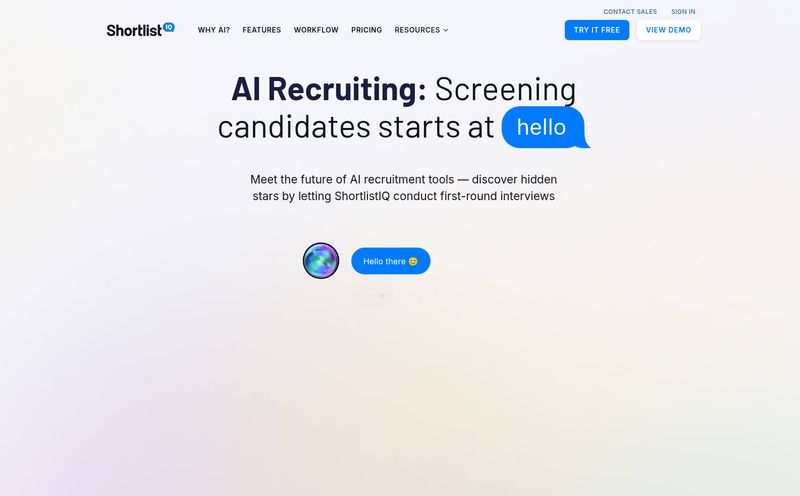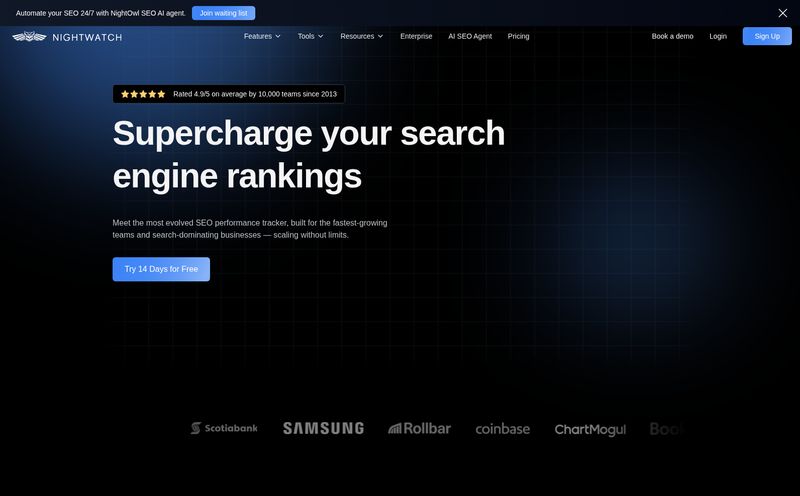You know that feeling. You leave the radiologist’s office with a CD-ROM or a link to a patient portal. You click on it, and there it is: a grayscale, abstract image of your own insides. You squint. You tilt your head. Is that a problem? Is that what’s been causing the pain? Or is it just… a smudge? The report itself is often no better, a wall of text filled with ten-dollar words like “heterogeneous echotexture” or “mild degenerative changes.” It’s your body, your health, but it feels like it’s written in a language from another planet.
For years, we’ve been stuck in this weird limbo—drowning in data but starved for understanding. It’s this exact frustration that got my attention when I stumbled upon a tool called CT Read. It makes a bold promise: to use AI to analyze your medical images and give you back a report that a normal person can actually understand. An AI translator for your body’s blueprints. Sounds like science fiction, right? Well, as someone who’s spent years watching trends in tech and traffic, I had to see if this was the real deal or just more AI hype.

Visit CT Read
So, What is CT Read, Exactly?
At its core, CT Read is an online platform that takes your medical images—we’re talking X-rays, CT scans, MRIs, and even Ultrasounds—and runs them through a sophisticated AI model. The goal isn't to diagnose you. Let’s get that out of the way right now. The goal is to interpret the data and present it in plain English. It’s designed for the patient, the curious family member, the person who just wants a little more context before their follow-up appointment.
You simply upload your image file. And I was pleasantly surprised to see it supports not just your standard JPEGs and PNGs, but also DICOM files. For anyone who’s ever tried to open one of those on a regular computer, you know that’s a big deal. The platform then does its thing, analyzing everything from your brain and chest to your abdomen and bones, and spits out a comprehensive summary of what it sees.
A Look Under the Hood at CT Read's Features
Okay, so it sounds cool. But what are you actually getting? I dug into the features, and a few things really stood out to me from a user’s perspective.
It Speaks Multiple Medical Languages
The biggest immediate win is its Multi-Modality Analysis. It's not just a one-trick pony for X-rays. The fact that it can handle MRIs, CTs, and ultrasounds makes it incredibly versatile. Whether you're looking at a twisted ankle from a sports injury, checking in on a pregnancy ultrasound, or monitoring bone density, the system is built to handle the specific type of image you throw at it. That’s huge.
The AI Brains of the Operation
Of course, the centerpiece is the AI-Powered Accuracy. The platform leverages trained AI models to spot abnormalities and highlight key findings. Think of it like having a tireless assistant who has seen millions of scans. It can pick up on subtle patterns that might be easy to miss and flag them for attention. The reports it generates are meant to be comprehensive, giving you not just a “what” but a “where,” with clear annotations and recommendations for what to discuss with your doctor.
Getting Answers Sooner Rather Than Later
And then there's the speed. Anyone who has anxiously waited for scan results knows that every hour can feel like a day. CT Read promises Rapid Results, which can dramatically shorten that agonizing waiting period. Getting that initial AI breakdown quickly can arm you with knowledge and reduce some of that medical anxiety. It's about turning passive waiting into active understanding.
Putting CT Read to the Test in the Real World
Features are nice, but where does the rubber meet the road? The website lists a few use cases that paint a pretty clear picture of who this is for.
- Sports Injuries: You're an amateur athlete and you get an MRI of your knee. Instead of just hearing “it’s a sprain,” you can see an AI-highlighted report that helps you visualize the extent of the issue, making your conversation with your physical therapist that much more productive.
- Dental X-rays: Ever been shown a tiny, dark X-ray and been told you have a cavity? CT Read can help demystify that image, giving you a clearer explanation of what's happening with your chompers.
- Pregnancy Ultrasounds: This is a beautiful one. It can provide another layer of insight into those precious first images, helping expectant parents connect with the journey by explaining things in simple, joyful terms.
- Chronic Condition Monitoring: If you're someone who needs regular scans to monitor something like bone density or an ongoing abdominal issue, the platform's ability to do comparative analysis over time (a premium feature) is genuinely powerful.
In my opinion, the real power here is empowerment. It’s for anyone who has ever felt like a passive participant in their own healthcare.
Okay, Let's Be Serious: This Is NOT Your Doctor
This is probably the most important paragraph in this entire article. I'm going to say it in big, bold letters: CT READ IS NOT A REPLACEMENT FOR A DOCTOR'S DIAGNOSIS.
Thinking this tool can replace a consultation with a qualified radiologist or physician is not just wrong, it's dangerous. The AI is fantastic for what it is: a data interpretation tool. It’s a sophisticated co-pilot. But your doctor is the captain of the plane. They take the AI's report, combine it with your physical exam, your medical history, your lab results, and their years of human experience to make a diagnosis and create a treatment plan.
Use CT Read as a tool to formulate better questions. Use it to have a more informed, intelligent conversation with your healthcare provider. Don't use it to self-diagnose on a Tuesday night. Please. The real value is in bridging the communication gap, not in trying to bypass the expert.
The Cost of Clarity: Breaking Down CT Read’s Pricing
So, how much does this peace of mind cost? CT Read uses a credit-based model, which I actually prefer over a recurring subscription for something like this. You buy credits, and you use them when you need them. Simple.
Here’s a quick look at their pricing tiers, as of writing this article:
| Package | Credits | Price | Price Per Credit |
|---|---|---|---|
| Starter | 1 | $9 | $9.00 |
| Standard | 4 | $19 | $4.75 |
| Pro | 8 | $29 | $3.63 |
| Pro Plus | 16 | $49 | $3.06 |
| Premium | 50 | $99 | $1.98 |
As you can see, the price per analysis drops dramatically the more credits you buy. For a one-off scan, $9 feels pretty reasonable for the clarity it could provide. But for power users or families, the larger packages offer significantly more value. One credit gets you one full AI analysis, unlocking all the premium features like comparative reports and advanced detection. You can also preview a part of the report for free, which is a nice touch.
Frequently Asked Questions About CT Read
So I'll ask again, can CT Read replace my doctor?
Absolutely not. It's an informational tool designed to help you understand your medical images better. Think of it as a very smart sidekick. Your doctor is the hero who makes the final diagnostic decisions based on a complete picture of your health.
What do I actually get when I use a credit?
One credit unlocks a full, in-depth AI-generated report for a single analysis. This includes detailed insights, potential anomaly detection, priority processing, and the ability to analyze high-resolution images. It's the whole shebang.
Is it difficult to use? Do I need to be a tech wizard?
Not at all. The interface is clean and user-friendly. It’s pretty much a drag-and-drop process. If you can upload a photo to social media, you can use CT Read.
How long do the credits last? Do they expire?
The website's FAQ mentions that the credits are valid for a specific period, so it’s always a good idea to check the terms when you purchase. This is pretty standard for credit-based systems.
What about the privacy of my medical data?
This is a critical question for any health-tech tool. CT Read states on their website that privacy is a priority. As with any platform handling sensitive information, I'd always recommend reading their full Privacy Policy to understand exactly how your data is handled and secured.
My Final Thoughts on CT Read
So, is CT Read a gimmick or a game-changer? In my experience, it lands somewhere in the middle, leaning heavily towards being a genuinely useful tool. It's not the sci-fi medical tricorder that will diagnose you instantly. But it is an impressive step forward in patient empowerment.
The biggest challenge in healthcare isn't always the treatment, it's the communication. It's the fear and confusion that comes from not understanding what's happening inside your own skin. A tool like CT Read directly tackles that problem. For a small fee, it provides a layer of translation that can reduce anxiety and lead to better, more productive doctor's visits. And in today's world, I'd say that's a pretty valuable thing.



